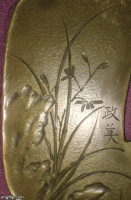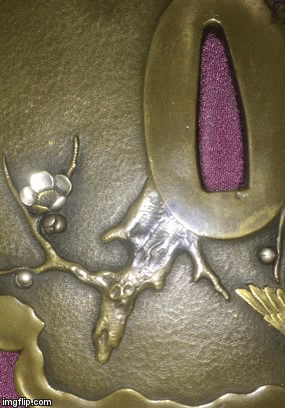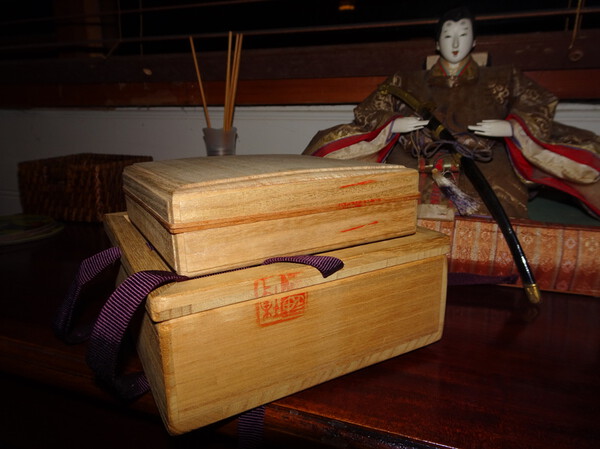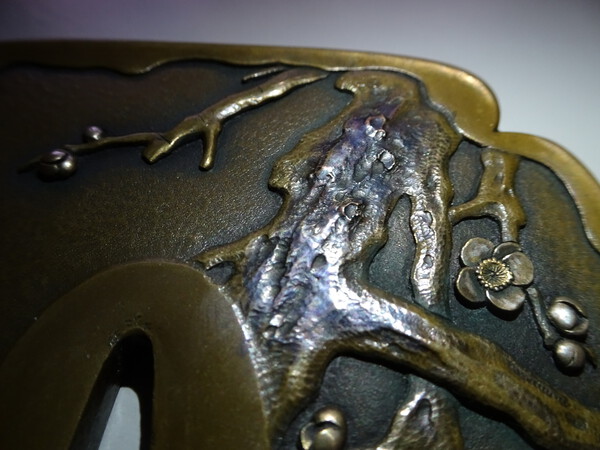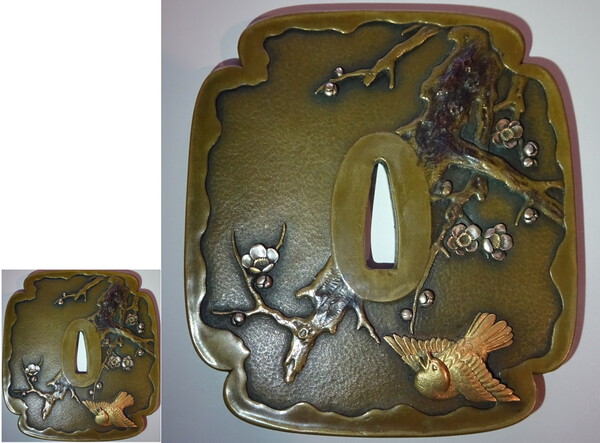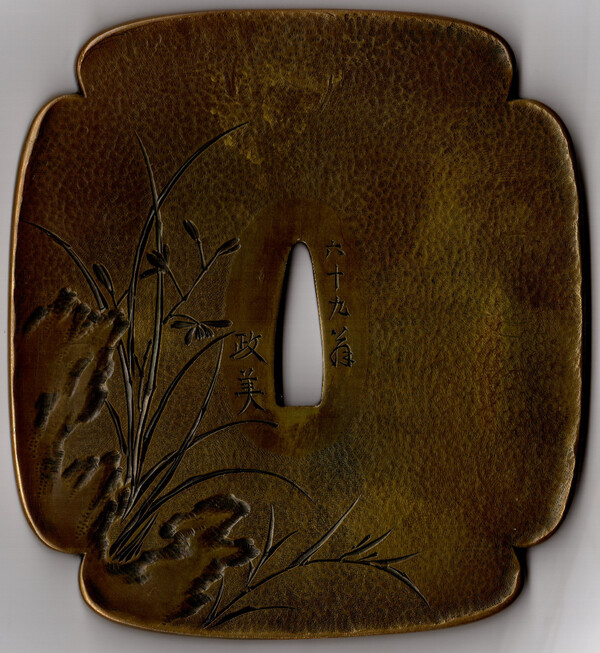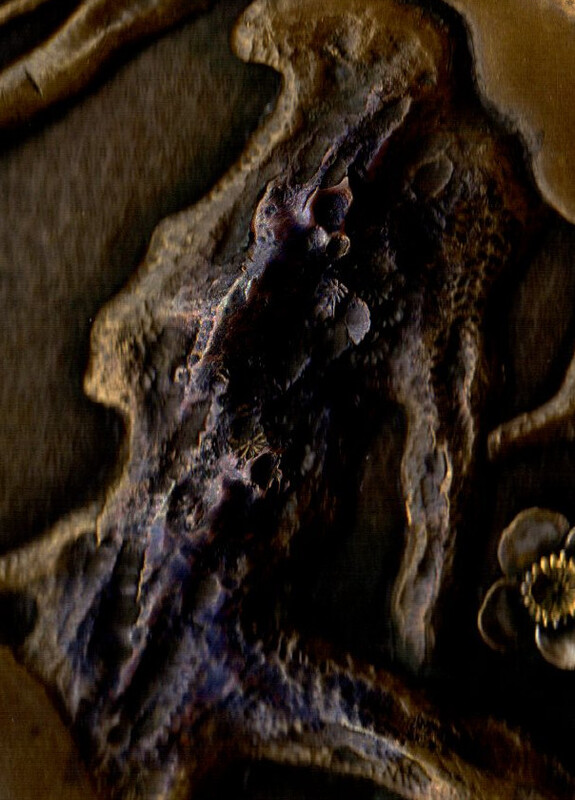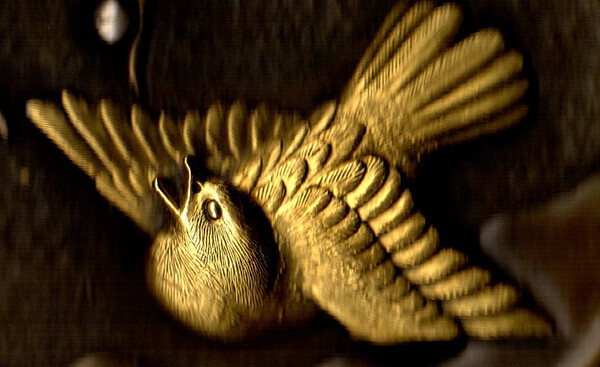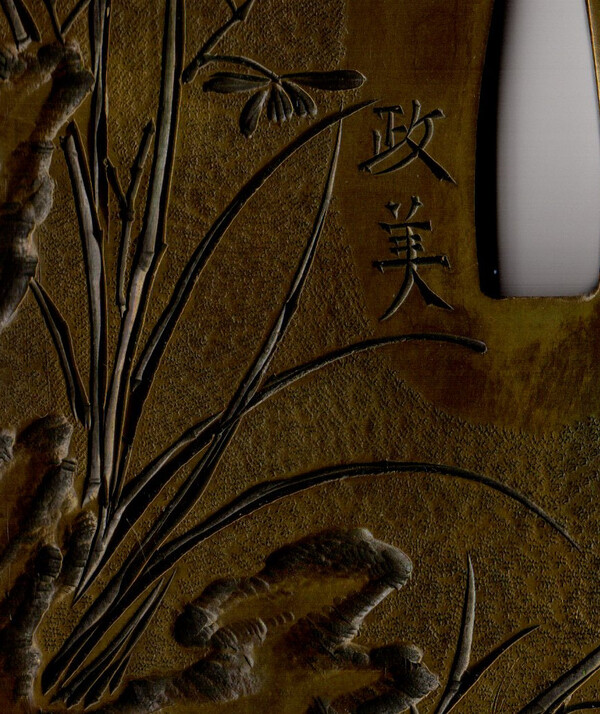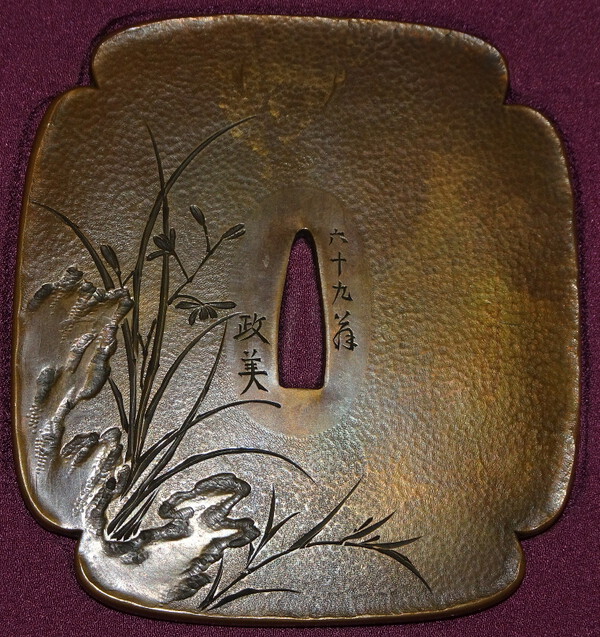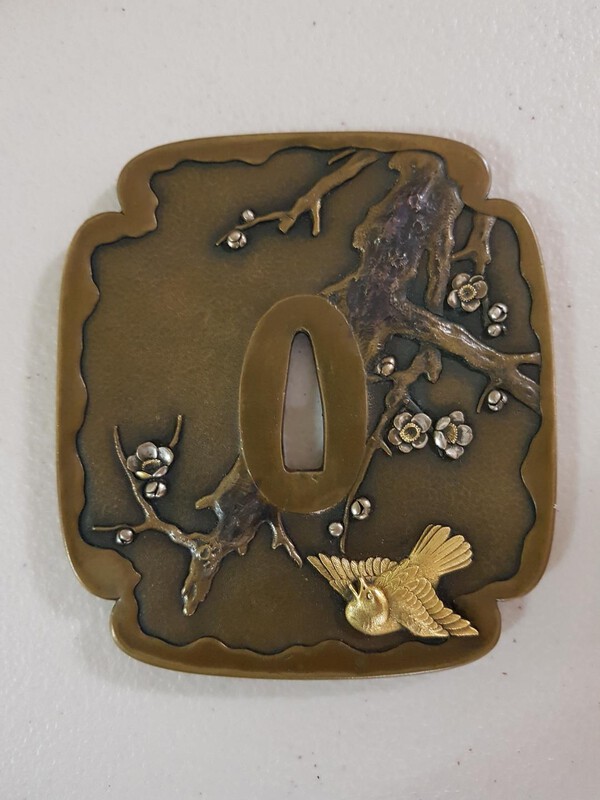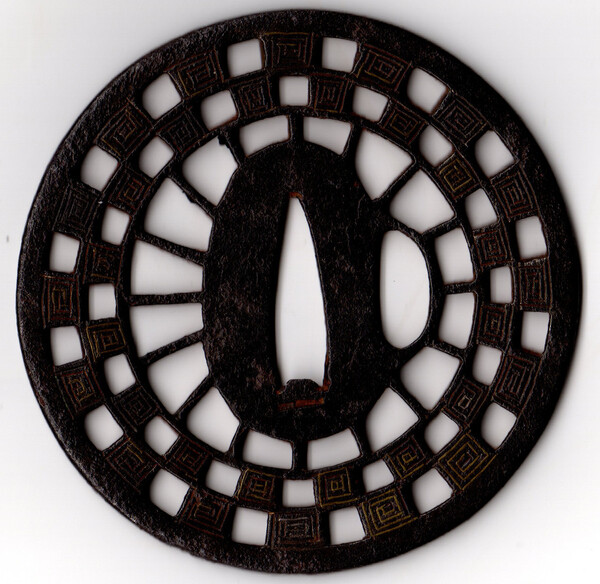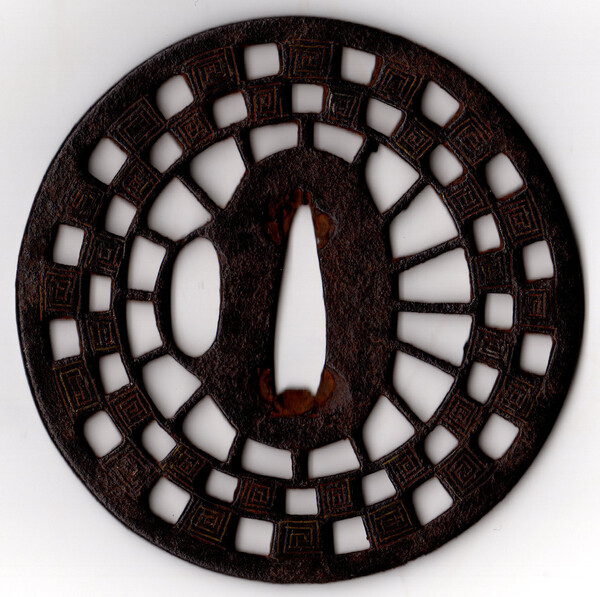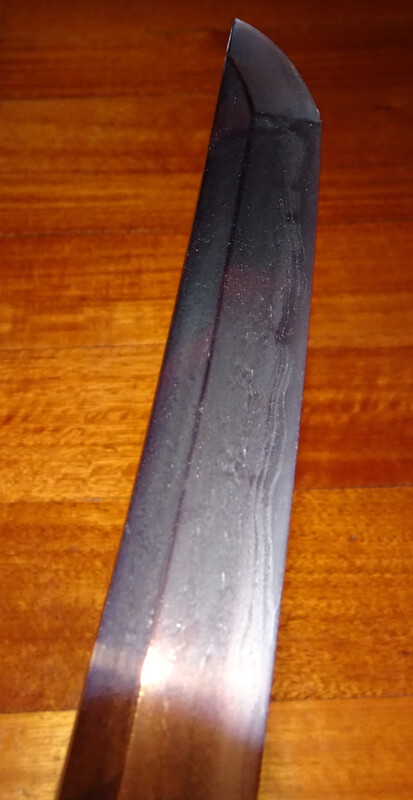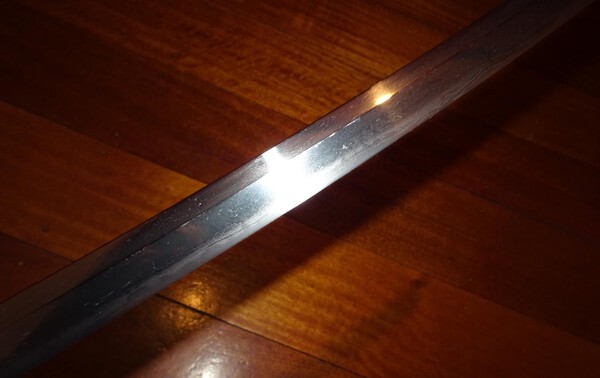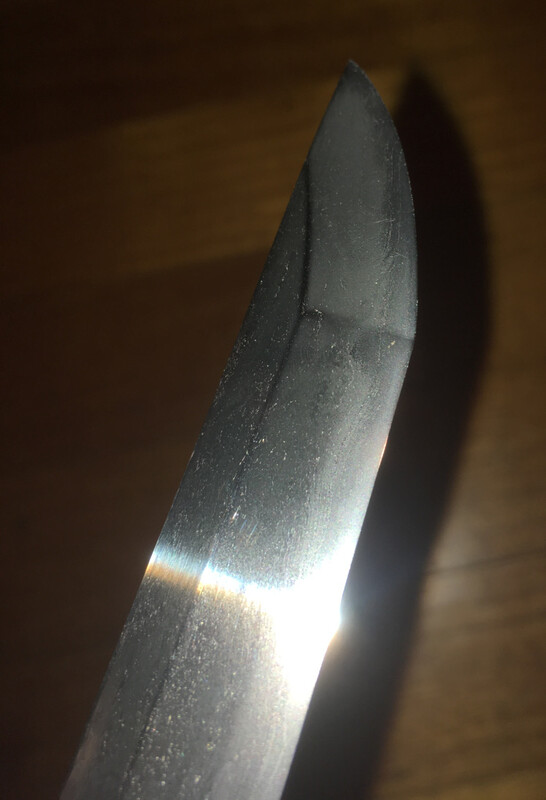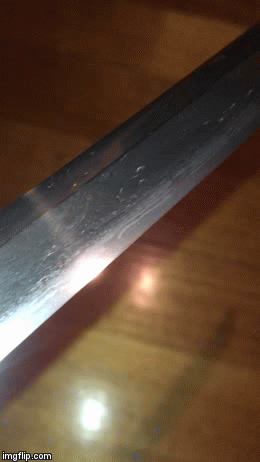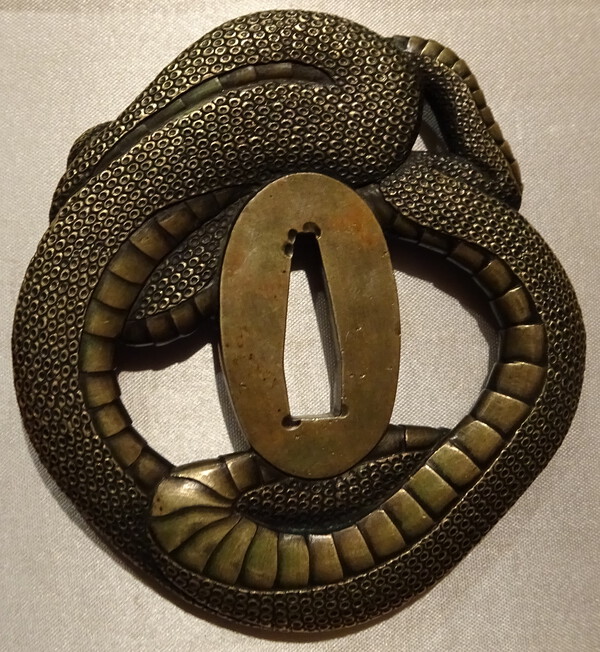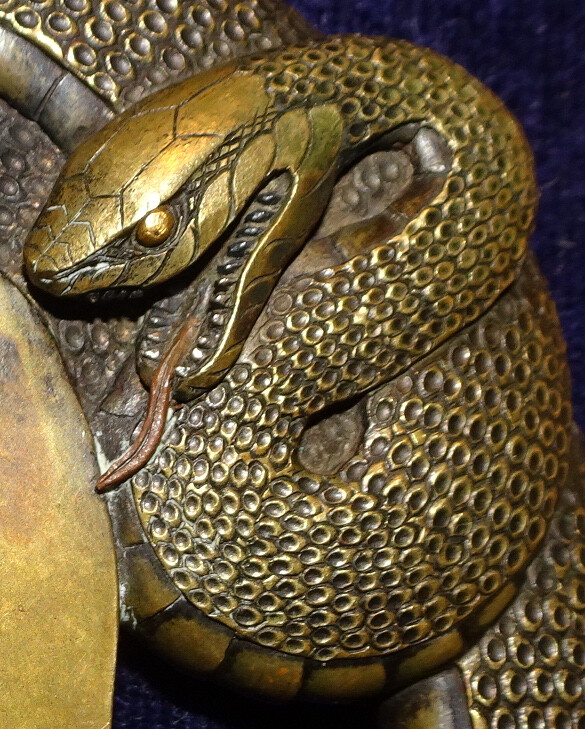
FletchSan
Members-
Posts
355 -
Joined
-
Last visited
-
Days Won
5
Content Type
Profiles
Forums
Events
Store
Downloads
Gallery
Everything posted by FletchSan
-
The same - though I guess also some potential. I’ve invited him to post some pics on the forum should he want to find out a bit more about it.
-
Stumbled across this on YouTube - seems like a very interesting sword he has there based on the tsuba, habaki and saya. Would love to see that tsuka removed and some more images...
-
-
-
I received the original description which was taken from the dealer in Japan in the 80s. Just for interest, not claiming it’s anything other than what has been determined in this discussion *Genuine Japanese Shakudo Tsuba dates to 1843 *Tsuba Plum Blossom & Sparrow Kenjo Tsuba *(Presentation Formal Tsuba) *Sumi iri kaku gata Ishiguro school Shakudo *Flowering plum tree with a sparrow flying, is a favourite subject of this school. *The old gnarled branch, plum blossoms flowering the detail on the actual flowers is exquisite, gold tipped stamen. Silver colour Plum flower buds in various stages of opening, so realistic. *The sparrow in full flight with head turned (possibly solid gold) *Reverse: A rocky outcrop, wild lily growing, hand carved in strong definition. *Calligraphy, beautifully hand chiselled right hand side of the nakago ana reading 69 years old made *Left hand side: Masayoshi *Ishigoro Masayoshi (1774 to 1862) *A student of the Ishiguro School's founder, Ishiguro Masatsune I (1760 to 1828) *Masayoshi later worked as a retainer for the Shimazu daimyō at their Edo compound. *Takabori high relief carving), Hirabori (low relief carving) Shakudo, Shibuichi, Ishime ji background.* *Signed: Masayoshi, made at 69 years old *Edo Period *Kenjo meaning Presentation. The gift to a superior or an equal *Kenjo Tsuba were often gifted from one Daimyo to another Daimyo. *In the late Edo period they were often gifted by wealthy merchants to Daimyo until as late as 1870 when the Daimyo titles were abolished. *Dimensions: 10cm x 9.1cm x.5cm 384 grams
-
Thanks so much Ford, really appreciate your feedback on my Tsuba and glad to see it's at least a genuine Meiji era piece. I've decided to keep it - I do really like it and I guess that's the main thing and understand it may not be as collectible to tsuba enthusiasts given the period and market it was intended for. Not sure it adds anything - though it came in two boxes which have a stamp. cheers, Ben
-
I found this thread from 2013 very helpful as my tsuba was described as a Kenjo tsuba and explains why it wasn’t made to be mounted. http://www.militaria.co.za/nmb/topic/11102-plz-define-shiremono-hamamono-and-presentation-tsuba/
-
Some design similarities with this Masayoshi with the oversized fish on the bottom right corner. https://www.mfa.org/collections/object/tsuba-with-design-of-fish-shellfish-and-crustacea-10039 Assume this one if genuine would be a Meiji era later Masayoshi if one existed.
-
A few more showing detail and one showing actual size vs enlarged. Dimensions 9.2cm x 10cm. I think given the feedback and Masayoshi is obviously a big name I'm leaning towards returning the Tsuba. cheers, Ben
-
A high res scan of the back of the tsuba - scan doesn't work for the front of course, though captured some of the detail from the features touching the glass.
-
Same tsuba - I took both photos I’ll take better ones in better lighting conditions and try to show the detail on dove and flowers as well.
-
Given the size (10cm) and weight of this tsuba I doubt it was ever intended to be mounted.. is a presentation tsuba a thing or we’re all made to be mounted and used practically?
-
Well I know it’s not brand new at least, was purchased in Japan in the early 80s.
-
Hmm interesting. I’ll try to take some more detailed photos and try to have someone more expert examine in hand before I start demanding a refund Btw - it was described as a presentation tsuba because of the size. Could that explain why it looks like it was never mounted?
-
Thanks Fred. The seppa-dai is flat in person, though the photo does make it look different - trick of the light maybe. What are some other tell tale signs and would it be a modern repro or earlier? Photo of the reverse attached. cheers, Ben
-
Well, that stopped me! .. and a very good lesson. Not too much different to the world if nihonto it seems. What are some of the really obvious telltale signs in this example that it is cast as in hand the detail is there in the dove and flowers - more so than the photo reveals. Thanks all. Ben
-
After my wife bought me Lethal Elegance by Joe Earle for my birthday, which I've been enjoying admiring the amazing and diverse artistry of Japanese fittings, I've now gone and purchased 3 tsuba in as many weeks - someone please stop me Anyway, here's my latest acquisition which is a rather large beauty. I know literally nothing about tsuba, though the quality seems to be superb. cheers, Ben
-
Hi All, Interested in information about this tsuba which I have attached two high res scans of. I believe it is late muromachi - though would like some pointers as to the possible school and date. It measures 8.1cm x 8.1cm cheers, Ben
-
-
@Uwe - yours is quite similar to mine. I’m going to start documenting all of the variations Is yours actually that dark colour or is that a B&W scan / photo?
-
The sayagaki translation for interest. Sa The hamon bases on suguha and features ko-midare, nioi-ashi, and nie. The bōshi is yakitsume and the blade is ō-suriage-mumei. This Sa lived in Chikuzen province and was called Genza. He was the son of Jitsu’a, a student of Masamune, and was active around Gen’ō (1319-1321). I judge this blade as to be genuine. The appraiser, at present in Kyōto. Shutō Takeo Gentoshi from Shinbudō, resident of Sendai in Mutsu province + kao
-
Hi All, A recent acquisition and another member of the snake tsuba family! Interesting that the consensus is that these were cast and produced possibly for westerners late edo - though in my initial research I can't find two exactly the same. The snake heads in particular are all different and the detail in hand is stunning. Similar quality ones are in collections at the V&A in London and MET in New York. cheers, Ben
-
Papers are NTHK-NPO and not sure if the sayagaki is by anyone of note? - Shuto Takeo Gentoshi, couldn't find anything about him.
-
Darker patina at the bottom - I wonder if it’s a result of when it’s shortened or new mekugi-ana is added.


